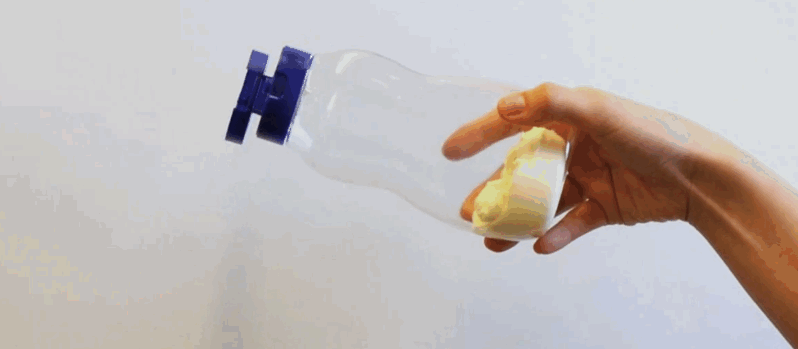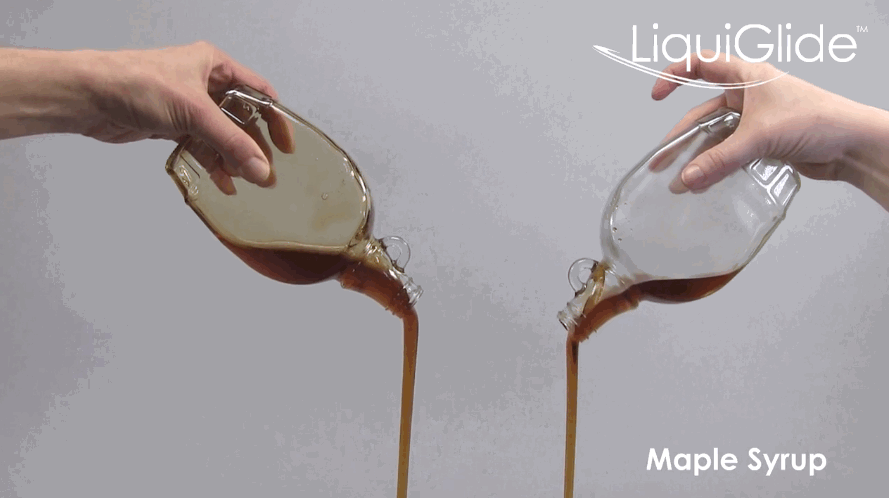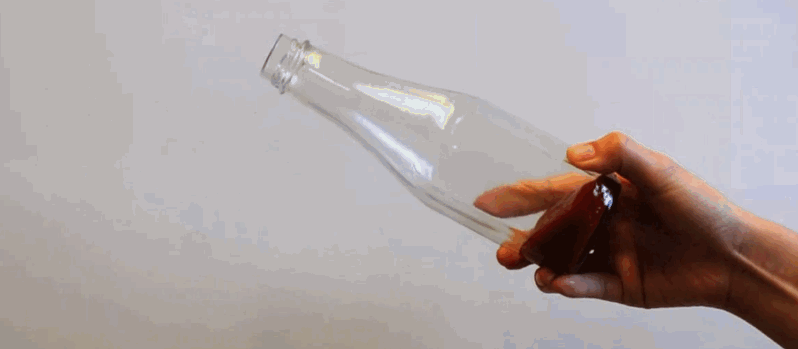
A new material could change the way we get sticky liquids out of bottles
Aside from solving a frustrating problem, an MIT associate professor's innovation could also cut down on waste
Struggling to get the last bit of mustard out of the bottle or the last squirt of toothpaste out of the tube can be one of the most frustrating feelings.
But a new coating called LiquiGlide might eliminate that problem. The substance can keep the inside of a container permanently wet, allowing its contents to easily slide out anytime. Look how easy it is get to mayonnaise out of a bottle coated in LiquiGlide:

LiquiGlide was originally created in 2012 by MIT associate professor Kripa Varanasi and several of his grad students. They’ve since formed their own company, and LiquiGlide has just announced that the product is now commercially available to be used for packaged goods, including condiments, dairy products, toothpaste, lotions, and liquid adhesives like glue. That means companies can now start buying the product to put inside containers.
The reason it’s difficult to get things like glue and condiments out of their containers is because they are viscous liquids that can’t flow without a powerful push. When these kinds of liquids are poured out of a bottle, different layers flow at distinct speeds — the portion in the center of the container flows fastest, while the layer closest to the edge sticks to the container’s inner surface. That creates friction and viscosity.
The idea behind LiquiGlide is to create an extra layer between the container and the liquid that will help the liquid slide out easier. The coating binds much more strongly to textured surfaces than to liquids, so when it’s painted onto the inside of a container, it allows liquid to flow freely over it without friction.
In this example, the non LiquiGlide syrup bottle is on the left and the LiquiGlide bottle is on the right:

“We’re not defying physics, but effectively, we are,” one of the MIT grad students, Dave Smith, told the New York Times.
The ingredients that make up LiquiGlid depend on the liquid and the containers that each batch is made for. For any food containers, the coating is made from edible materials like plants.
In addition to solving a universally frustrating problem, LiquiGlide also cuts down on waste, since it allows users to extract more glue, hair conditioner, or condiments out the last few stubborn squeezes. A consumer report from 2009 suggested some people end up throwing out up to a quarter of a bottle of lotion, 16 per cent of detergent, and 15 per cent of condiments because it’s too difficult to coax out the layer that sticks to the container.
“Packages containing viscous products are ubiquitous, and the waste and consumer frustration associated with traditional packaging formats are universal,” Varanasi said.
That, of course, includes the typically stubborn glass ketchup bottle.

LiquiGlide An earlier version of this post was written by Kelly Dickerson.

